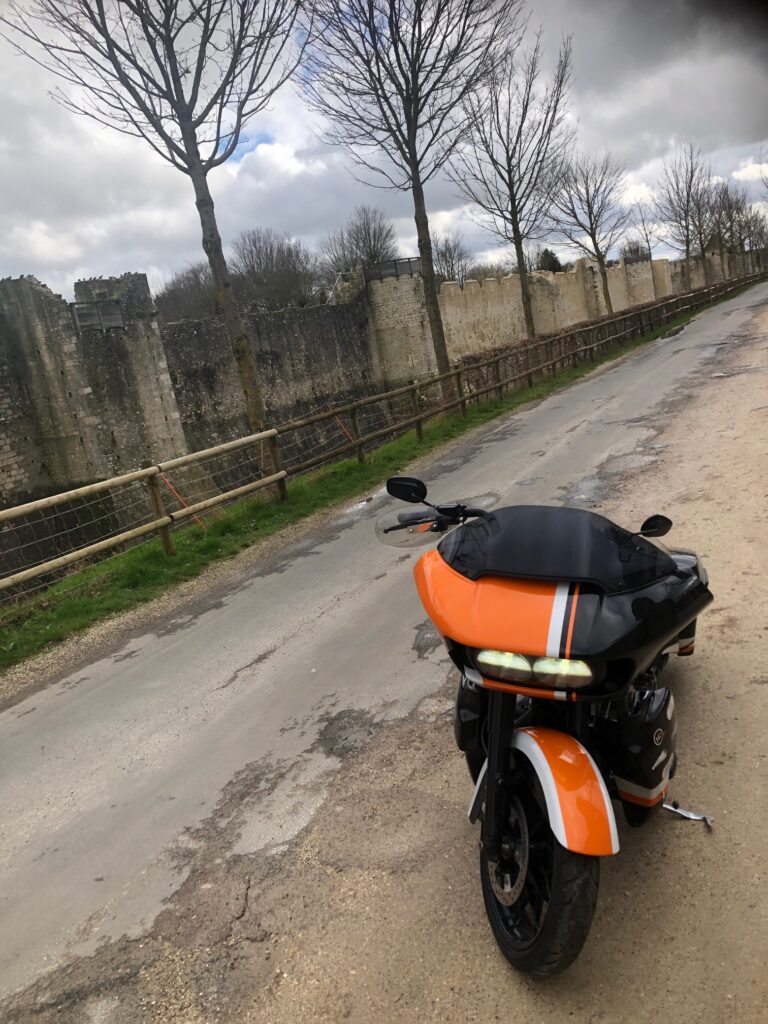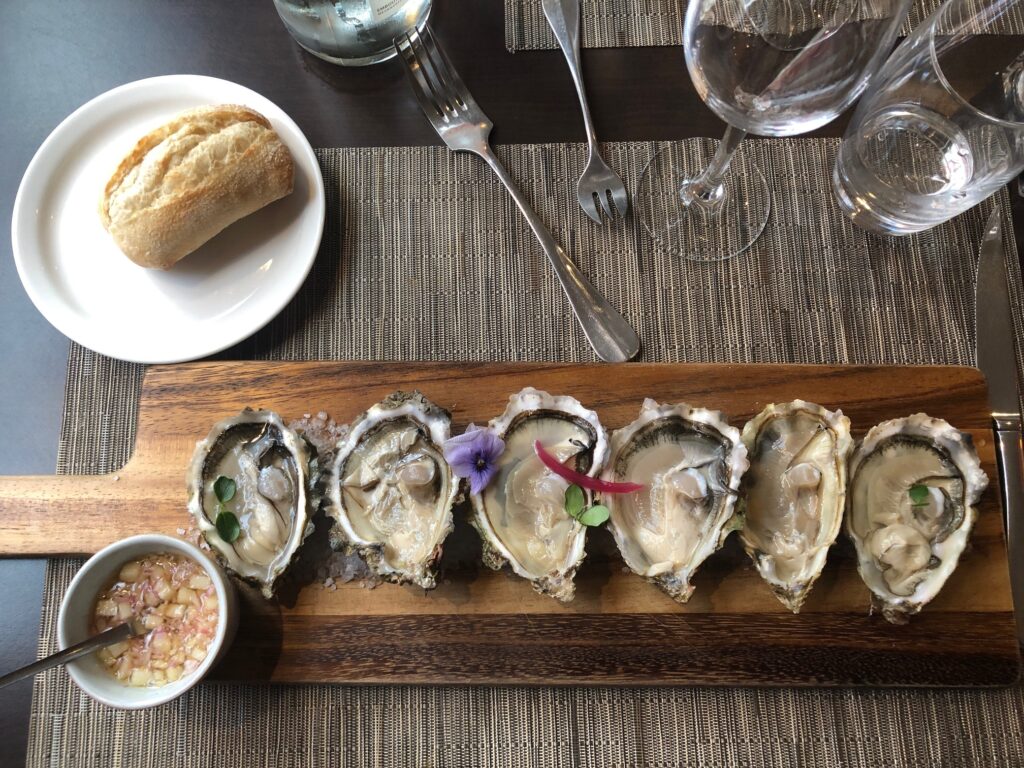Story and Photos by ITN European Reporter Herve’ Rebollo.
Salut à toi American rider,
On that last Saturday in February, it was time to ride again, and (almost) everyone was ready to go…
The idea was to visit my friend JP in his so cool workshop (remember, I wrote an article a few years ago about his talented son Vincent: INTRODUCING VINCENT VERMANDEL, A 16 YEAR OLD MOTOR HEAD IN FRANCE AND HIS RECONSTRUCTED FXR – Iron Trader News)…
… then, trying to find roads that are not flooded, heading east …
… reach the famous medieval city of PROVINS (80km south east from Paris).
PROVINS is a commune in the SEINE-ET-MARNE department in the ÎLE-DE-FRANCE region in north-central FRANCE. Known for its well-preserved medieval architecture and importance throughout the Middle Ages as an economic center and a host of annual trading fairs.
Provins became a UNESCO World Heritage Site in 2001
And of course, having a maximum of photographies of my lovely Road Glide in front of castles is still one of my favorite game.
Lucky me, it was not cold and not so rainy (we currently have a very strange winter/February month in France. It’s not cold, very soft and incredibly rainy).
The historic walled city of Provins is an outstanding and authentic example of a medieval fair town in Champagne, a region that was an important centre of exchange, and which witnessed, together with the rise of trading fairs in the 11th century, the beginning of significant international trade in Europe.
Of international scope, these trade fairs which targeted merchants and traders required the protection of long-distance freight transport between Europe and the East, encouraging the development of activities such as banking and foreign exchange, as well as productive activities (tanning, dyeing, cloth trade). The urban layout and the medieval dwellings that remain in Provins are an outstanding example of an architectural ensemble built specially to fulfill these functions.
This complex includes merchant houses, vaulted cellars and warehouses, outdoor spaces for trade, and religious ensembles. The city is also known for its well-preserved defense system, which was built for the protection of the fairs.
At the beginning of the 2nd millennium, Provins was one of several towns in the territory of the Counts of Champagne that became the venues for great annual trading fairs linking northern Europe with the Mediterranean world. Provins preserves to a high degree the architecture and urban layout that characterize these great medieval fair towns.
Although Provins suffered some destruction during the Hundred Years War in the 14th and 15th centuries, as well as during the French Revolution, it was quite minimal. The urban plan of the medieval town is well preserved, as are a large part of the historic buildings, canals and the water management system. Some 150 historic houses have preserved their medieval vaulted cellars, intended for the storage of goods
Despite minor changes since the 17th century, the city has preserved its integrity and that of the places associated with the various functions of the fairs. The relationship of the upper town with the plains of Plateau Briard is also intact. The new buildings in the lower town respect the volumes of the ensemble and integrate nicely with the historic buildings.
Due to its economic decline, but also to the persistence of its urban functions, the medieval fairs town of Provins remains relatively intact to this day. Open spaces, cellars, public and religious buildings and fortifications have preserved the medieval character of the fairgrounds.
The city of Provins is subject to a set of protection measures taken under the Heritage Code and the Environmental Code, which ensure effective protection of the property. In addition to the protection of many buildings under the Historic Monuments Act and the protection of sites outside the ramparts for listed sites, it is part of a remarkable heritage site in which development is strictly controlled.
And, when it’s lunchtime, do not worry, Provins old city offers a large choice of restaurants of great quality (as you now know me for a long time, you know you can trust me about this -very important- aspect of my bikerlife).
And yes, it’ nice, tasty, traditional and …
… good!
The city of Provins is one of the most beautiful medieval towns in France! It is one of the few towns in France that can boast of over fifty listed Monuments with historical value as the Cesar Tower.
The Cesar Tower is the emblematic monument of the medieval city of Provins and a concentrate of history! This 12th century keep is impressive both in size and shape!
It is also called the “Grosse Tour”, served as a watchtower, a refuge and a prison.
Prisoners were locked up in the turrets and dungeons, narrow and sometimes into total darkness …
Today it houses the bells of the collegiate church of Saint-Quiriace and still rings twice: 5mn before and on the hour.
Before you reach the sumptuous 17th century roof structure …
… you will pass through the vaulted guards’ room, the room known as the “Governor’s Office”, very luxurious with its fireplace and especially its individual latrines, the “Pâté aux Anglais”, and finally the covered way to protect against bad weather and attacks.
As far as we know, very few documents are available which could throw light on the existence and precise use of the Underground Galleries.
Many questions still remain unanswered. Nevertheless, various assumptions have been made thanks to historical cross-checks and observations. Originally these galleries were probably used as a quarry to extract a specific type of fuller’s earth for degreasing woollen cloth. We know that the cloth industry flourished in Medieval Provins, and the needs of the local fullers must therefore have been considerable. Once the cavities had been dug out, the town’s inhabitants put them to a variety of uses. They became hiding places, storerooms during the Champagne Fairs or places of worship. And some of the graffiti inscriptions suggest that they were used by the town’s freemasons. The undergrounds go very far and you will only visit a small part of them…
But finally, what is a medieval town or a medieval city?
A medieval town or a medieval city is by definition an urban area protected by fortifications! This is exactly the configuration of Provins, because in the Middle Ages, the whole town was surrounded by ramparts forming a unique protective belt for all its inhabitants. It’s enough to make you dizzy…
Built between the 11th and 13th centuries, the ramparts are 25m high, and at the time were 5km long, certainly one of the most imposing fortified walls in France! The Count was thinking big, in order to accommodate and protect the citizens and the many merchants that came for the Fairs of Champagne.
Today, there is still 1.2 km left around the upper town. As in most cities, the missing part has been used to build or rebuild houses.
All along your walk, you can have fun naming the different shapes of the towers: round, rectangular, almond-shaped, octagonal, hexagonal, trapezoidal, etc.

The builders were able to take advantage of the city’s wealth to demonstrate their know-how, building all the geometric styles.
And when you leave the city …
… you can pay your tribute to the WWI fallen, right outside the remparts, spending a little time to visit the local commonwealth war graves of Provins.
It was a nice ride, an interesting day. I met my friend JP, I improved my historical knowledge and my average cultural level, I was exhausted (my little brain is not used to having such a diet). And now it was time for a good beer at the bar at my Harley dealership.
I hope I’ll have soon the pleasure to bring you there soon.
See ya soon on the road, who knows?
Hervé, your French biker friend.
See: The medieval town of Provins – Provins Tourisme, entre Bassée, Montois et Provinois
























































More Stories
The Ride to my Knife
THE TRANS-PYRENEAN RIDE (between France, Spain and Andorra)
THE NO DESTINATION LONG RIDE (2800 km / 1740 miles)